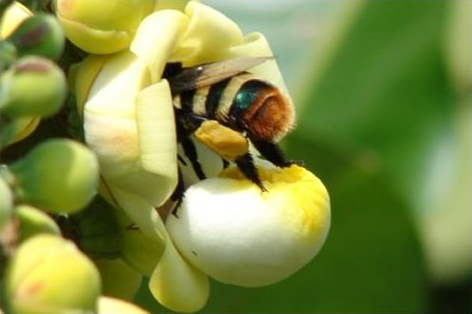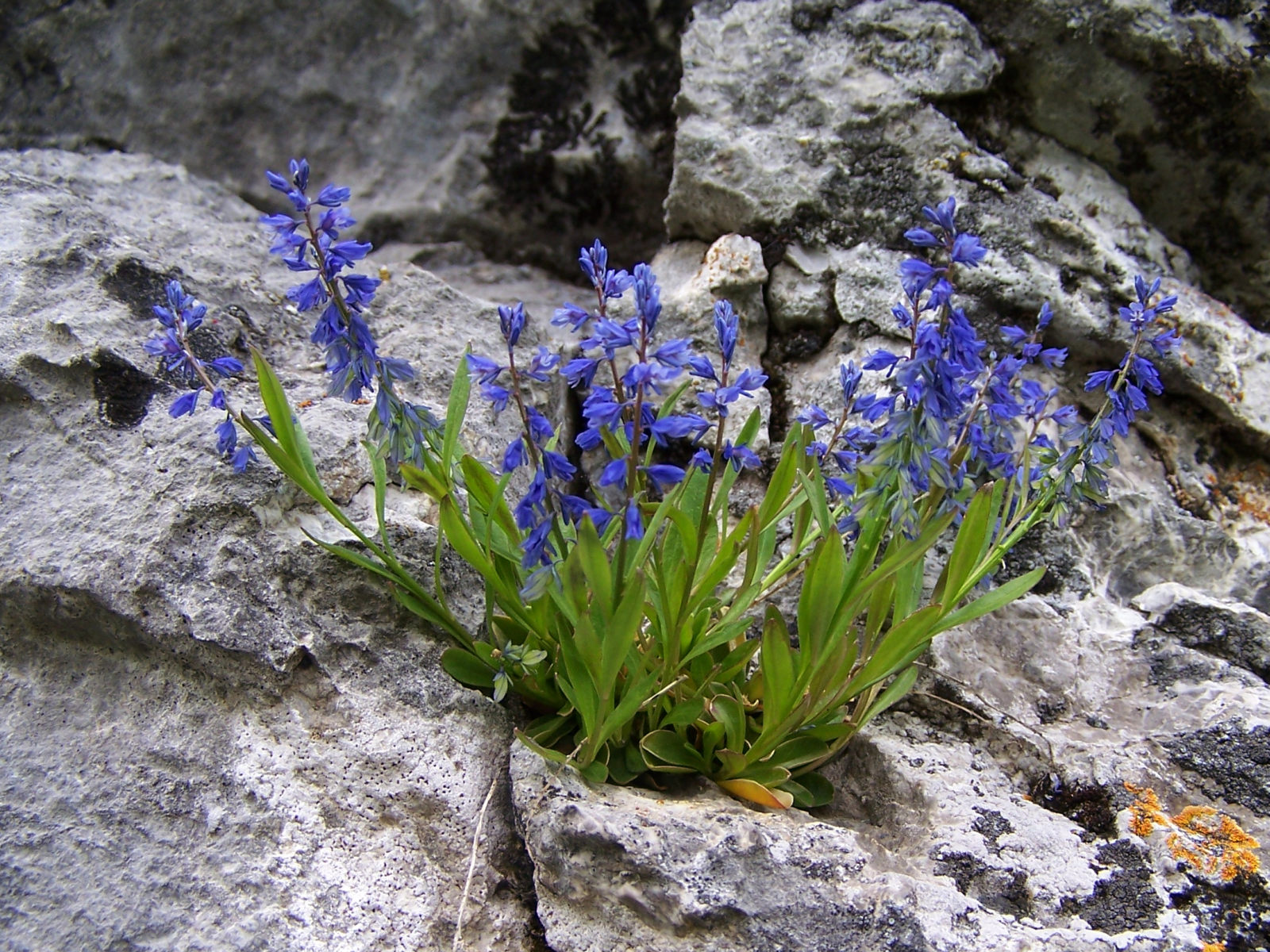|
Eulaema Mocsaryi
''Eulaema mocsaryi'' is a species of large-bodied bee in the tribe Euglossini, the orchid bees. It was named in honour of the Hungarian entomologist Alexander Mocsáry, curator of the Hungarian Natural History Museum. It is native to forests in parts of tropical South America. Description The head of ''Eulaema mocsaryi'' has a central raised ridge and both head and thorax are clad in short velvety black hairs. The colour of head and thorax is mainly black. The legs are black and hairy and the tibial joints of the hind legs are wide and compressed. The dark-coloured abdomen is densely covered with short tawny-yellowish hairs, becoming paler towards the tip of the abdomen. Distribution ''Eulaema mocsaryi'' is native to the forests of Colombia, Surinam and the Amazon basin in Brazil. Ecology ''Eulaema mocsaryi'' has been seen visiting the flowers of '' Solanum toxicarium'' and '' Polygala spectabilis''. The male has a mutualistic relationship with the orchid '' Cattleya eldorado ... [...More Info...] [...Related Items...] OR: [Wikipedia] [Google] [Baidu] |
Species
In biology, a species is the basic unit of classification and a taxonomic rank of an organism, as well as a unit of biodiversity. A species is often defined as the largest group of organisms in which any two individuals of the appropriate sexes or mating types can produce fertile offspring, typically by sexual reproduction. Other ways of defining species include their karyotype, DNA sequence, morphology, behaviour or ecological niche. In addition, paleontologists use the concept of the chronospecies since fossil reproduction cannot be examined. The most recent rigorous estimate for the total number of species of eukaryotes is between 8 and 8.7 million. However, only about 14% of these had been described by 2011. All species (except viruses) are given a two-part name, a "binomial". The first part of a binomial is the genus to which the species belongs. The second part is called the specific name or the specific epithet (in botanical nomenclature, also sometimes i ... [...More Info...] [...Related Items...] OR: [Wikipedia] [Google] [Baidu] |
Euglossini
The tribe (biology), tribe Euglossini, in the subfamily Apinae, commonly known as orchid bees or euglossine bees, are the only group of Pollen basket, corbiculate bees whose non-parasitic members do not all possess Eusociality, eusocial behavior. Description Most of the tribe's species are solitary, though a few are communal, or exhibit simple forms of eusociality. There are about 200 described species, distributed in five genera: ''Euglossa'', ''Eulaema'', ''Eufriesea'', ''Exaerete'' and the monotypic ''Aglae''. All exclusively occur in South or Central America (though one species, ''Euglossa dilemma'', has become established in the United States). The genera ''Exaerete'' and ''Aglae'' are Kleptoparasite, kleptoparasites in the nests of other orchid bees. All except ''Eulaema'' are characterized by brilliant metallic coloration, primarily green, gold, and blue. Females gather pollen and nectar as food from a variety of plants, and resins, mud and other materials for nest build ... [...More Info...] [...Related Items...] OR: [Wikipedia] [Google] [Baidu] |
Alexander Mocsáry
Alexander Mocsary, sometimes hu, Mocsáry Sándor (27 September 1841, Nagyvárad ( ro, Oradea) - 26 December 1915, Budapest) was a Hungarian entomologist who specialised in Hymenoptera. He was the Curator of the Hungarian Natural History Museum where his collection of mainly Hungarian insects of all Orders is conserved. He described many new taxa. Works * Ordo. Hymenoptera. In: Paszlavsky, J.: ''Fauna Regni Hungariae. Regia Societas Scientiarum Naturalium Hungarica'', Budapest: 7–113 (1918) References * Anonym, 1911 ocsary, A.''Rovart. Lapok'' 18 27 * Kutzscher, C. & Taeger, A., 1998 ''Portraits und biographische Daten''. In: Taeger, A. & Blank, S. M. 1998 (Hrsg.) ''Pflanzenwespen Deutschlands (Hymenoptera, Symphyta).'' Kommentierte Bestandsaufnahme. Goecke & Evers, Keltern Keltren is a municipality in the district of Enz in Baden-Württemberg in Germany. History The oldest documentary records for the constituent towns of Keltern are from 827 or 830 for Dietenhause ... [...More Info...] [...Related Items...] OR: [Wikipedia] [Google] [Baidu] |
Curator
A curator (from la, cura, meaning "to take care") is a manager or overseer. When working with cultural organizations, a curator is typically a "collections curator" or an "exhibitions curator", and has multifaceted tasks dependent on the particular institution and its mission. In recent years the role of curator has evolved alongside the changing role of museums, and the term "curator" may designate the head of any given division. More recently, new kinds of curators have started to emerge: "community curators", "literary curators", " digital curators" and " biocurators". Collections curator A "collections curator", a "museum curator" or a "keeper" of a cultural heritage institution (e.g., gallery, museum, library or archive) is a content specialist charged with an institution's collections and involved with the interpretation of heritage material including historical artifacts. A collections curator's concern necessarily involves tangible objects of some sort—artwork, c ... [...More Info...] [...Related Items...] OR: [Wikipedia] [Google] [Baidu] |
Hungarian Natural History Museum
The Hungarian Natural History Museum ( hu, Magyar Természettudományi Múzeum) in Budapest, dating back to 1802, houses the largest natural history collections of Hungary and the region. History of the museum Foundation In 1802, Count Ferenc Széchényi offered his library and his numismatic collection for the benefit of the Hungarian nation, so as to establish the base of a future national library, and a scientific and education center. This foundation gave rise to the Hungarian National Museum (and the Széchényi Library). Within the museum, the mineral collection of Julianna Festetics, the wife of the count, served as the origin of the future natural history collections. The first paleontological collection was a gift of Archduke Rainer in 1811, and the first zoological collection was bought in the same year. In 1818 the late Pál Kitaibel's herbarium was offered to the museum, giving rise to the new Botanical department. At the time of Hungary's revolution against t ... [...More Info...] [...Related Items...] OR: [Wikipedia] [Google] [Baidu] |
Eulaema Mocsaryi F
''Eulaema'' is a genus of large-bodied euglossine bees that occur primarily in the Neotropics. They are robust brown or black bees, hairy or velvety, and often striped with yellow or orange, typically resembling bumblebees. They lack metallic coloration as occurs in the related genus ''Eufriesea''. Distribution ''Eulaema'' is found from Rio Grande do Sul (Brazil), Misiones (Argentina) and Paraguay to northern Mexico with occasional strays into the United States The United States of America (U.S.A. or USA), commonly known as the United States (U.S. or US) or America, is a country primarily located in North America. It consists of 50 states, a federal district, five major unincorporated territorie .... Species References {{Taxonbar, from=Q4038261 Bee genera Hymenoptera of North America Hymenoptera of South America Orchid pollinators ... [...More Info...] [...Related Items...] OR: [Wikipedia] [Google] [Baidu] |
Solanum Toxicarium
''Solanum'' is a large and diverse genus of flowering plants, which include three food crops of high economic importance: the potato, the tomato and the eggplant (aubergine, brinjal). It is the largest genus in the nightshade family Solanaceae, comprising around 1,500 species. It also contains the so-called horse nettles (unrelated to the genus of true nettles, ''Urtica''), as well as numerous plants cultivated for their ornamental flowers and fruit. ''Solanum'' species show a wide range of growth habits, such as annuals and perennials, vines, subshrubs, shrubs, and small trees. Many formerly independent genera like ''Lycopersicon'' (the tomatoes) and ''Cyphomandra'' are now included in ''Solanum'' as subgenera or sections. Thus, the genus today contains roughly 1,500–2,000 species. Name The generic name was first used by Pliny the Elder (AD 23–79) for a plant also known as , most likely ''S. nigrum''. Its derivation is uncertain, possibly stemming from the Latin word , me ... [...More Info...] [...Related Items...] OR: [Wikipedia] [Google] [Baidu] |
Polygala Spectabilis
''Polygala'' is a large genus of flowering plants belonging to the family Polygalaceae. They are commonly known as milkworts or snakeroots. The genus is distributed widely throughout much of the world''Polygala''. Flora of China. in zones and the .''Polygala''. The Jepson eFlora 2013. The genus name ''Polygala'' comes from the |
Mutualism (biology)
Mutualism describes the ecological interaction between two or more species where each species has a net benefit. Mutualism is a common type of ecological interaction. Prominent examples include most vascular plants engaged in mutualistic interactions with mycorrhizae, flowering plants being pollinated by animals, vascular plants being dispersed by animals, and corals with zooxanthellae, among many others. Mutualism can be contrasted with interspecific competition, in which each species experiences ''reduced'' fitness, and exploitation, or parasitism, in which one species benefits at the expense of the other. The term ''mutualism'' was introduced by Pierre-Joseph van Beneden in his 1876 book ''Animal Parasites and Messmates'' to mean "mutual aid among species". Mutualism is often conflated with two other types of ecological phenomena: cooperation and symbiosis. Cooperation most commonly refers to increases in fitness through within-species (intraspecific) interactions, althoug ... [...More Info...] [...Related Items...] OR: [Wikipedia] [Google] [Baidu] |
Cattleya Eldorado
''Cattleya'' () is a genus of orchids from Costa Rica south to Argentina. The genus is abbreviated C in trade journals. Description Epiphytic or terrestrial orchids with cylindrical rhizome from which the fleshy noodle-like roots grow. Pseudobulbs can be conical, spindle-shaped or cylindrical; with upright growth; one or two leaves growing from the top of them. The leaves can be oblong, lanceolate or elliptical, somewhat fleshy, with smooth margin. The inflorescence is a terminal raceme with few or several flowers. Flowers have sepals and petals free from each other; the lip or labellum (lowermost petal), usually has a different coloration and shape from the rest of the flower and covers in part the flower column forming a tube. There are four polliniums (bag-like organs that contain pollen). The fruit is a capsule with many small seeds.Schweinfurth, C., "Orchidaceae, Orchids of Peru", ''Fieldiana, Botany'' 30(3): 535 Taxonomy The genus was named in 1824 by John Lindley af ... [...More Info...] [...Related Items...] OR: [Wikipedia] [Google] [Baidu] |
Brazil Nut
The Brazil nut (''Bertholletia excelsa'') is a South American tree in the family Lecythidaceae, and it is also the name of the tree's commercially harvested edible seeds. It is one of the largest and longest-lived trees in the Amazon rainforest. The fruit and its nutshell – containing the edible Brazil nut – are relatively large, possibly weighing as much as in total weight. As food, Brazil nuts are notable for diverse content of micronutrients, especially a high amount of selenium. The wood of the Brazil nut tree is prized for its quality in carpentry, flooring, and heavy construction. Common names In various Spanish-speaking countries of South America, Brazil nuts are called , , or . In Brazil, they are more commonly called "" (meaning "chestnuts from Pará" in Portuguese), with other names also used. In North America, as early as 1896, Brazil nuts were sometimes known by the slang term "nigger toes", a vulgarity that gradually fell out of use as the racial slur became ... [...More Info...] [...Related Items...] OR: [Wikipedia] [Google] [Baidu] |
Epiphyte
An epiphyte is an organism that grows on the surface of a plant and derives its moisture and nutrients from the air, rain, water (in marine environments) or from debris accumulating around it. The plants on which epiphytes grow are called phorophytes. Epiphytes take part in nutrient cycles and add to both the diversity and biomass of the ecosystem in which they occur, like any other organism. They are an important source of food for many species. Typically, the older parts of a plant will have more epiphytes growing on them. Epiphytes differ from parasites in that they grow on other plants for physical support and do not necessarily affect the host negatively. An organism that grows on another organism that is not a plant may be called an epibiont. Epiphytes are usually found in the temperate zone (e.g., many mosses, liverworts, lichens, and algae) or in the tropics (e.g., many ferns, cacti, orchids, and bromeliads). Epiphyte species make good houseplants due to their minimal wat ... [...More Info...] [...Related Items...] OR: [Wikipedia] [Google] [Baidu] |



.jpg)






